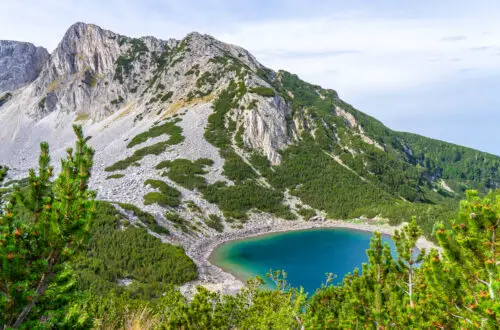
Spring Tradition: Ancient Ritual Of The Kukeri in Eleshnitsa
One thing that I love about Bulgaria is how much they are still tied to their traditions and ancient rituals. One of the most interesting things that you can see and experience in Bulgaria is the kukeri. This is an old ritual where villagers dress up as scary beings to scare away the evil spirits. They do this by dancing through the streets of the village while making loud music. You can see the kukeri in different places in Bulgaria, but one of the best places to see it as a foreigner is Eleshnitsa.
In this article I will share everything you need to know to experience this ancient ritual: the Kukeri in Eleshnitsa.

Everything You Need To Know To See The Kukeri In Eleshnitsa
1. Let’s start with geography: where is Eleshnitsa?
Eleshnitsa is a small town in the southwestern area of Bulgaria, close to the mountain resort Bansko. Although it’s not a popular tourist destination, some people visit the area for some nice hikes and you can find a few hot springs in the area as well. But the main reason why people go to Eleshnitsa is during orthodox Easter, to see the kukeri ritual in Eleshnitsa.
The best way to get in Eleshnitsa is by car or hitchhiking. The nearest towns are Banya, Dobrinishte and of course Bansko. There are parking spots at the beginning of the town, where you can easily find a place (for free). These are the Google Maps coordinates for a parking spot that I always use. Usually at the other side of the river there are parking spots as well. As far as I know there is no direct bus going from Bansko to Eleshnitsa.
Most of the celebrations and the performances are on the town square of Eleshnitsa. Don’t worry if you don’t know where to go: in the morning lots of them are warming up and you will hear the sound of the cow bells from far away!

2. What does kukeri mean and what can you expect of this ritual?
Kukeri means high, masked people; kuker means hood in Latin. And I think this pretty much describes how the kukeri look like.The kukeri ritual is an ancient ritual in Bulgaria. In Eastern European countries like Serbia and Bulgaria kuker also often refers to god of fertility. It has its roots in Slavic and Thracian rituals. Many villages in Bulgaria still do this ritual to scare away evil spirits and bring fertility for the upcoming year to their land.
Originally the kukeri go into people’s houses as well, but that doesn’t really happen nowadays.
During the kukeri in Eleshnitsa there are multiple groups performing on the main square of Eleshnitsa. Usually there are also a couple of food stands around the town square and a kids area to entertain the young ones.
The New Yorker made an interesting short documentary about kukeri, so if you wanna get in the mood I would recommend you to watch this 10-minute documentary!
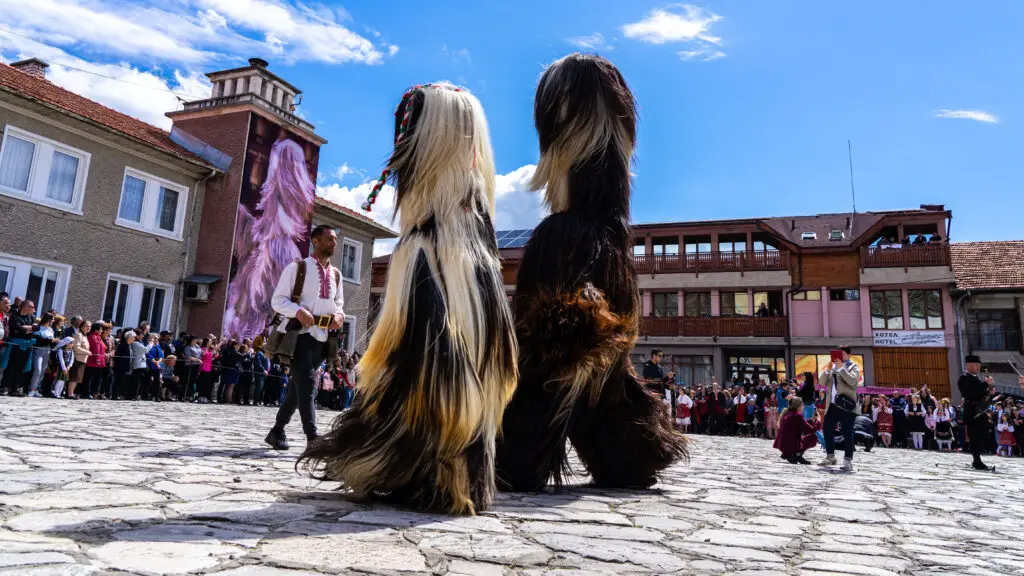

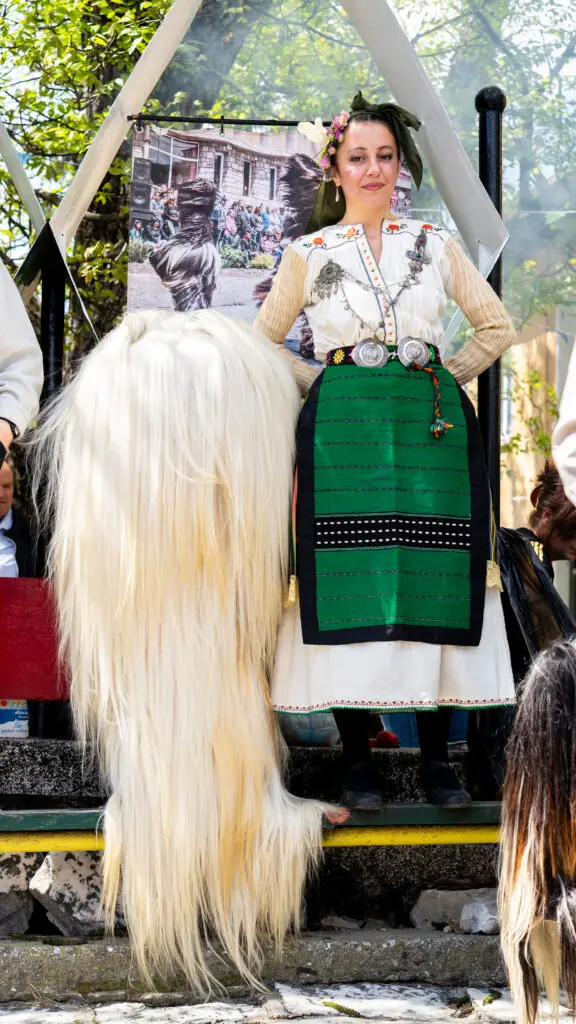

3. When can you see the kukeri in Eleshnitsa & other places in Bulgaria?
A lot of the kukeri rituals are at the start of the year, in January. In Bansko you see the kukeri going through the street and at the town square on the 1st of January. In those cold winter months there are other villages that will do the ritual as well.
Not in every place they call it a kukeri ritual: other names for the same ritual are surva/survakari (Pernik), babugeri (Bansko), chaushi and starci. Some rituals are done in the evenings, usually around a big fire. The one in Eleshnitsa is at daytime.
The surva in Pernik (close to Sofia) at the end of January is a huge event that you can visit. In 2025 you can go to this event 25th & 26th of January 2025.
And then we have of course the kukeri in Eleshnitsa, during Orthodox Easter. In 2025 Orthodox Easter is Sunday 20th of April 2025. During the ritual there are multiple groups performing in Eleshnitsa. It’s a big event and it attracts a lot of visitors, both Bulgarian and foreign visitors. I suggest to come as early as possible to find yourself a nice spot at the town square. I think if you’re in Eleshnitsa around 9.00/9.30am you’re good to go.
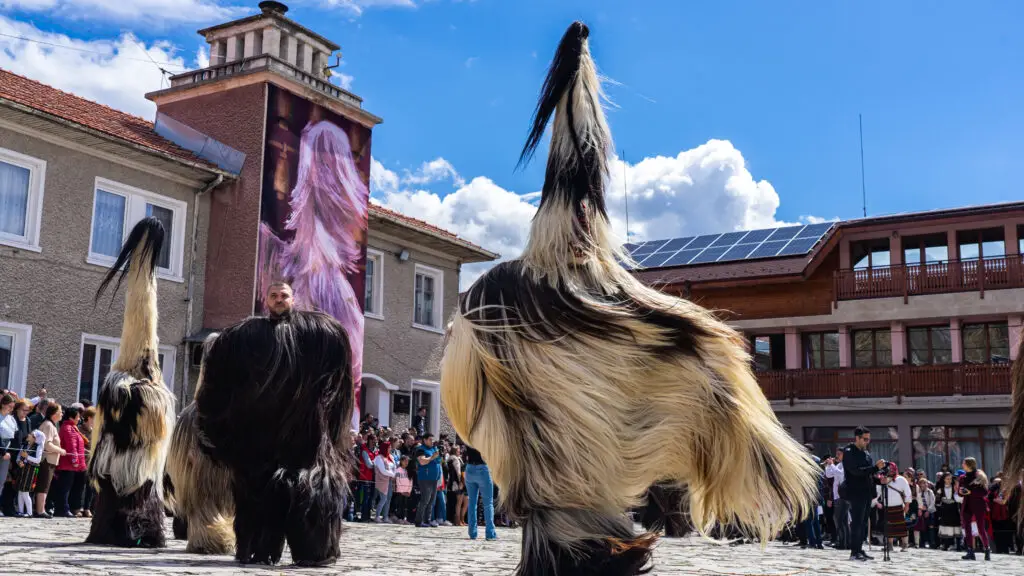
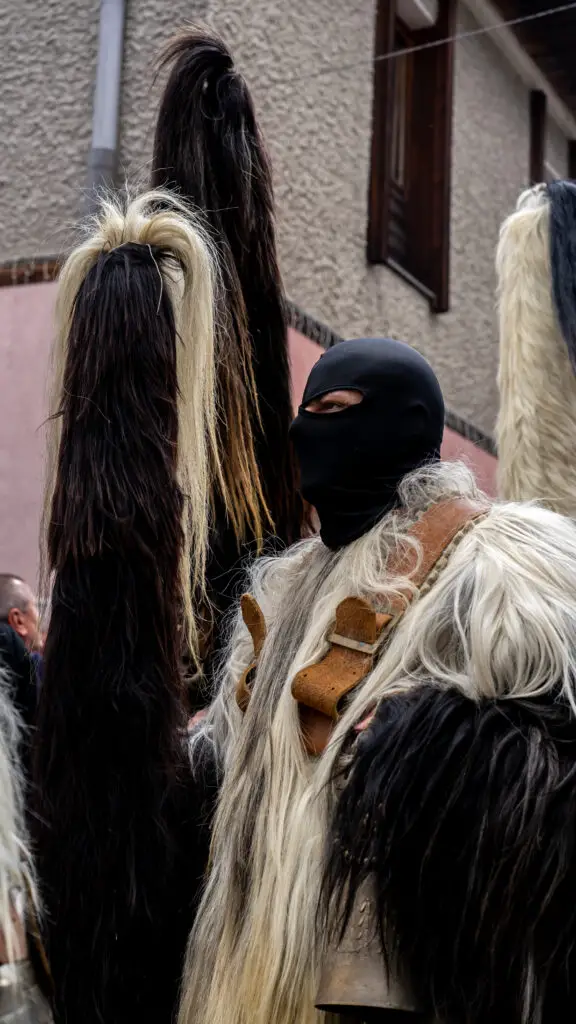


4. Who’s participating in this tradition?
Most people call kukeri demon dancers or evil spirit chasers. Not everyone can be part of the kukeri ritual: it’s only a few families that own the kukeri costumes. The costumes are handmade, usually made of goat hair. Most costumes are more than 3 meters high and can weigh up to 100 kilos! They combine the costume with big scary masks made of leather or wood. Most of them wear large cowbells as well. The sound of the bells helps to scare away the evil spirits.
Traditionally it’s only the men who can wear the kukeri costumes, but I have seen women and children joining the kukeri ritual in Eleshnitsa as well.
The main characters in the ritual are of course the kukeri, but during this ritual there is also a big group of dancers. They do a traditional dance in a big circle called the horo. They are wearing colourful clothes and it just makes this event even more special to watch. Usually there is a live band included as well, with instruments like the bagpipe.
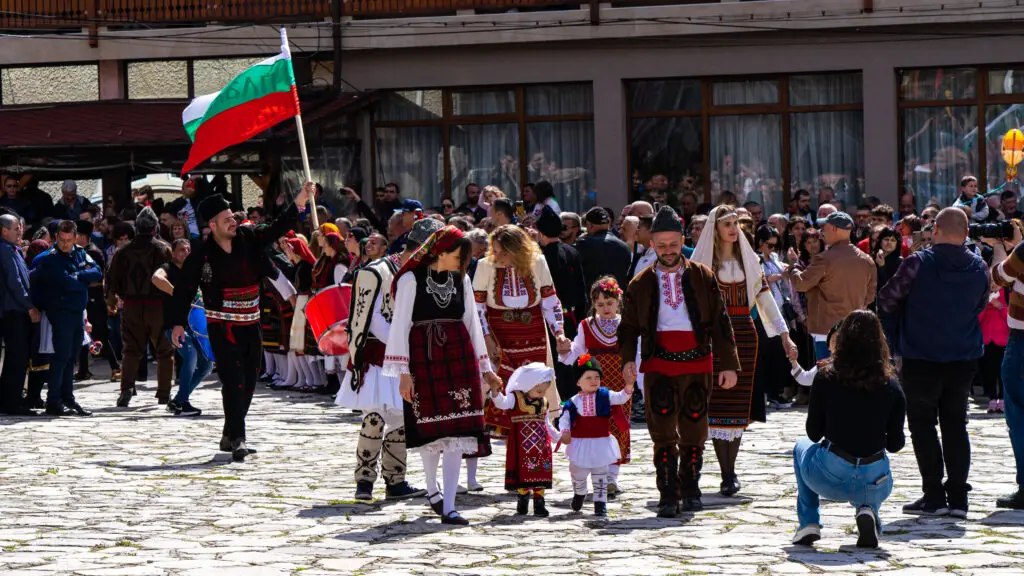


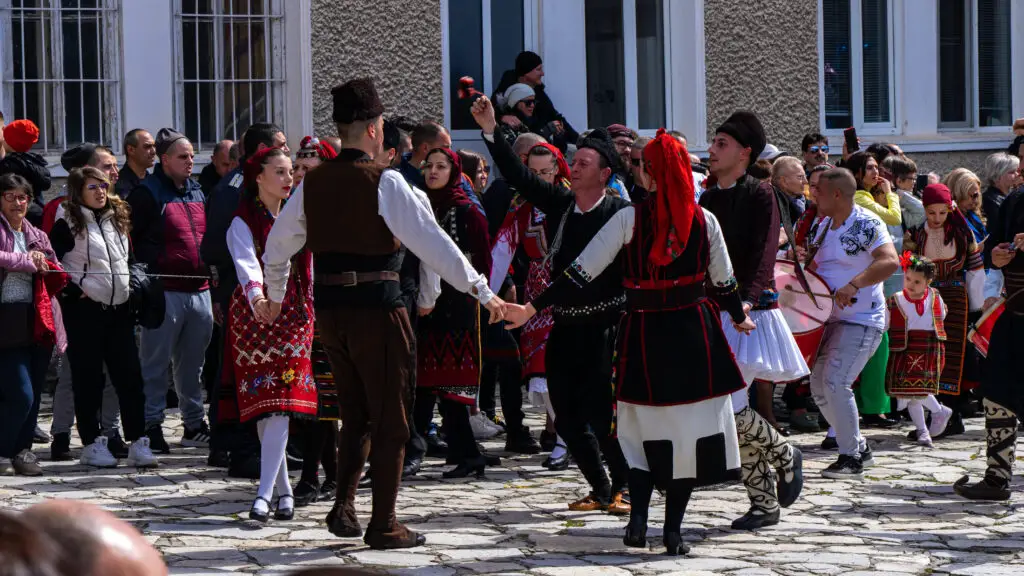
I hope this article is useful for you, in case you ever want to experience the kukeri ritual in Bulgaria yourself. I think Eleshnitsa is a great place to see it, the same applies for Pernik (close to Sofia). If you have any questions, please share them in the comments below or send a message to jessica@explorebulgarianow.com.
Disclaimer: this page might contain affiliate links. This is a free website, but of course it takes time and energy to gather information, take pictures and videos and create articles to help you. Via affiliate links we get a commission if you buy or book something online. At no extra cost for you! See it as a little thank you for this information. 🙂



